Orthodontic treatment has come a long way in recent years, with new technologies and techniques constantly being developed. One such advancement is Invisalign, a popular alternative to traditional metal braces. Invisalign uses a series of clear, removable aligners to gradually straighten the teeth. But can Invisalign also expand the dental arch?
The dental arch refers to the curved shape of the upper and lower jaws, which determines the alignment of the teeth. In some cases, the dental arch may be too narrow, resulting in crowded or misaligned teeth. Traditionally, expanding the dental arch required the use of bulky, uncomfortable appliances such as palatal expanders. However, with Invisalign, dental arch expansion may be possible without the need for these traditional devices.
The Benefits of Invisalign for Dental Arch Expansion
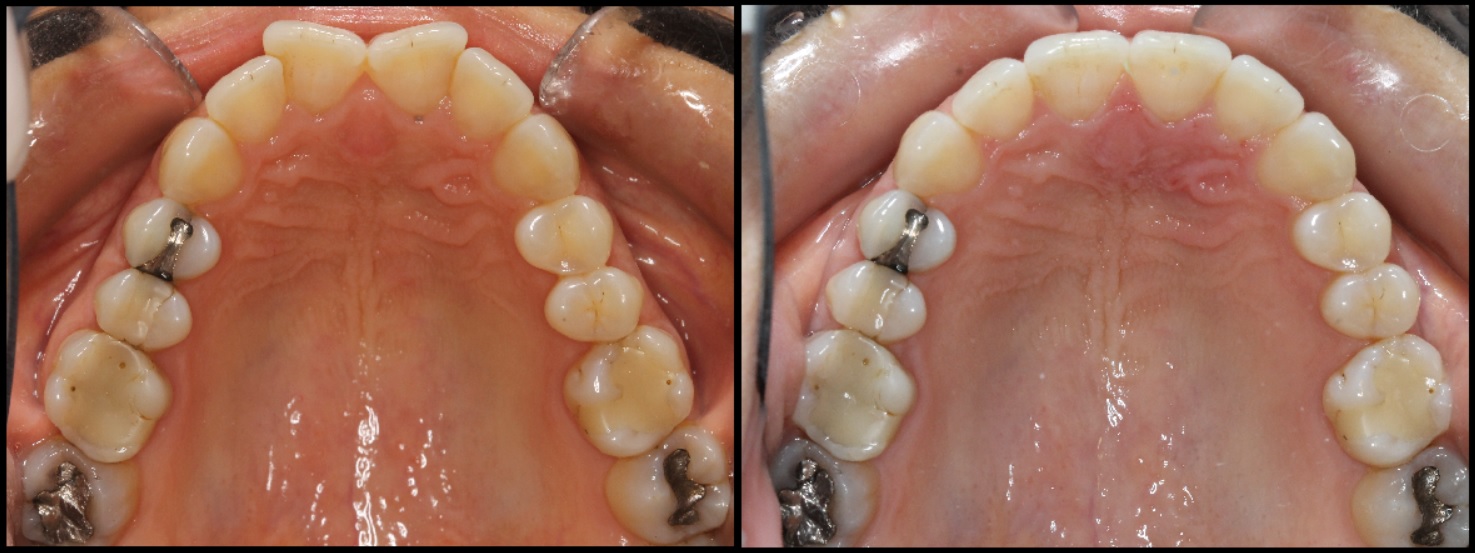
Dental arch expansion is a crucial aspect of orthodontic treatment, and Invisalign offers several benefits for achieving this goal. Invisalign is a clear aligner system that uses a series of custom-made, removable trays to gradually move the teeth into the desired position.
1. Improved Aesthetics
One of the main advantages of Invisalign for dental arch expansion is its aesthetic appeal. Unlike traditional braces, Invisalign aligners are virtually invisible when worn, making them a popular choice for individuals who want to improve their smile without drawing attention to their orthodontic treatment.
2. Comfortable and Convenient
Invisalign aligners are made of smooth, BPA-free plastic, making them more comfortable to wear compared to metal braces. The aligners are custom-made to fit snugly over the teeth, reducing the risk of irritation or discomfort. Additionally, Invisalign aligners are removable, allowing for easy cleaning and maintenance of oral hygiene.
3. Predictable Results
Invisalign treatment involves the use of advanced 3D imaging technology to create a virtual representation of the desired tooth movement. This allows for precise planning and prediction of the final outcome. Patients can visualize the expected results before starting the treatment, giving them confidence in the process and ensuring optimal results.
4. Reduced Treatment Time
In some cases, Invisalign treatment can achieve dental arch expansion more quickly compared to traditional braces. The aligners are designed to exert controlled and gradual pressure on the teeth, allowing for efficient movement. This can result in shorter treatment times and fewer visits to the orthodontist.
5. Minimal Disruption to Lifestyle
Unlike traditional braces, Invisalign aligners can be removed for eating, drinking, and special occasions. This means that patients can continue to enjoy their favorite foods and maintain their regular oral hygiene routine without any restrictions. Invisalign aligners also require fewer adjustments compared to braces, reducing the need for frequent visits to the orthodontist.
Dental arch expansion is a technique used to widen the dental arch, which is the curved structure that supports the teeth. This procedure is commonly used in orthodontics to create more space in the mouth and improve the alignment of the teeth.
When the dental arch is narrow, it can lead to a variety of dental issues, such as crowding, overlapping teeth, and a misaligned bite. Dental arch expansion can help address these problems by widening the arch and creating more space for the teeth to properly align.
There are several factors that can contribute to a narrow dental arch, including genetics, thumb sucking, and mouth breathing. In some cases, a narrow dental arch may be the result of a developmental issue or a previous orthodontic treatment that did not properly address the alignment of the teeth.
During the dental arch expansion process, pressure is applied to the teeth and the surrounding bone to gradually widen the arch. This can be done using various orthodontic techniques, including braces, palatal expanders, and Invisalign.
Invisalign is a popular choice for dental arch expansion because it offers a more discreet and comfortable treatment option compared to traditional braces. Invisalign uses a series of clear aligners that are custom-made to fit snugly over the teeth. These aligners apply gentle pressure to gradually move the teeth and widen the dental arch.
One of the benefits of using Invisalign for dental arch expansion is that the aligners can be removed for eating and oral hygiene. This makes it easier to maintain good oral health during the treatment process.
How Invisalign Works for Dental Arch Expansion

The process begins with a consultation with an Invisalign provider who will assess the patient’s dental arch and determine if expansion is necessary. If expansion is recommended, the provider will create a treatment plan that includes the use of aligners specifically designed to expand the dental arch.
Once the treatment plan is created, the patient will receive their first set of aligners. These aligners are worn for a specified period of time, usually about two weeks, before being replaced with the next set in the series. Each set of aligners is slightly different, gradually applying pressure to the teeth and guiding them into their new positions.
Throughout the treatment process, it is essential to follow the provider’s instructions and wear the aligners for the recommended amount of time each day. Failure to do so may result in delayed or suboptimal results.
Overall, Invisalign offers a convenient and effective solution for dental arch expansion. With its clear aligners and gradual approach, it provides a comfortable and discreet alternative to traditional orthodontic methods.
The Role of Aligners in Dental Arch Expansion
During the treatment process, a series of custom-made aligners are created specifically for each patient. These aligners are made from a clear, BPA-free plastic material, making them virtually invisible when worn. They are designed to fit snugly over the teeth and exert gentle pressure to gradually shift them into the desired positions.
Benefits of Aligners for Dental Arch Expansion
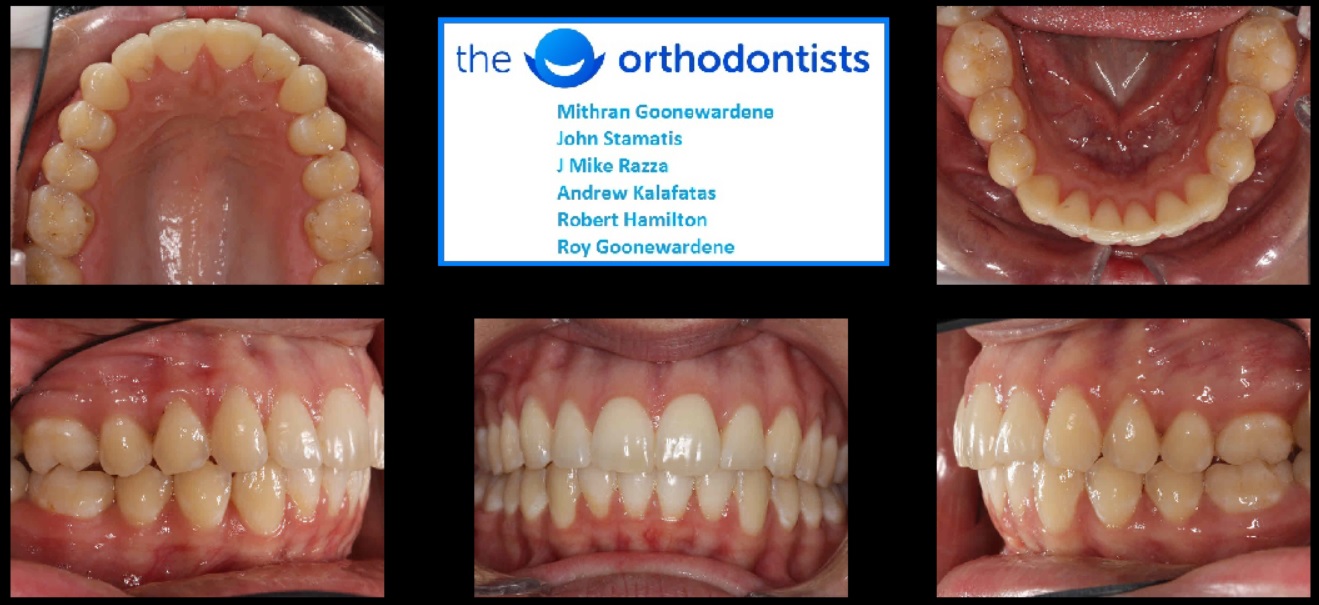
There are several benefits to using aligners for dental arch expansion with Invisalign:
- Comfort: The aligners are smooth and comfortable to wear, minimizing any discomfort or irritation.
- Removability: Aligners can be easily removed for eating, drinking, and oral hygiene, making them more convenient than traditional braces.
- Aesthetics: The clear aligners are virtually invisible, allowing for a more discreet orthodontic treatment.
- Predictability: Invisalign treatment is planned using advanced computer imaging technology, providing a clear view of the expected results.
- Customization: Each aligner is custom-made to fit the patient’s teeth, ensuring a precise and comfortable fit.
Overall, the aligners used in Invisalign treatment play a crucial role in dental arch expansion. They apply gentle pressure to stimulate bone remodeling, allowing for the expansion of the dental arch and improved alignment of the teeth. With the many benefits they offer, aligners have become a popular choice for individuals seeking orthodontic treatment for dental arch expansion.
The Importance of Dental Arch Expansion
Dental arch expansion is a crucial aspect of orthodontic treatment, and it plays a significant role in achieving optimal results with Invisalign. The dental arch refers to the curved structure of the upper and lower teeth that form the shape of the jaw.
When the dental arch is narrow or constricted, it can lead to various dental issues, such as overcrowding, misalignment, and bite problems. These issues can cause discomfort, difficulty in chewing, and even affect speech. Dental arch expansion helps to address these problems by widening the arch and creating more space for the teeth to align properly.
Benefits of Dental Arch Expansion
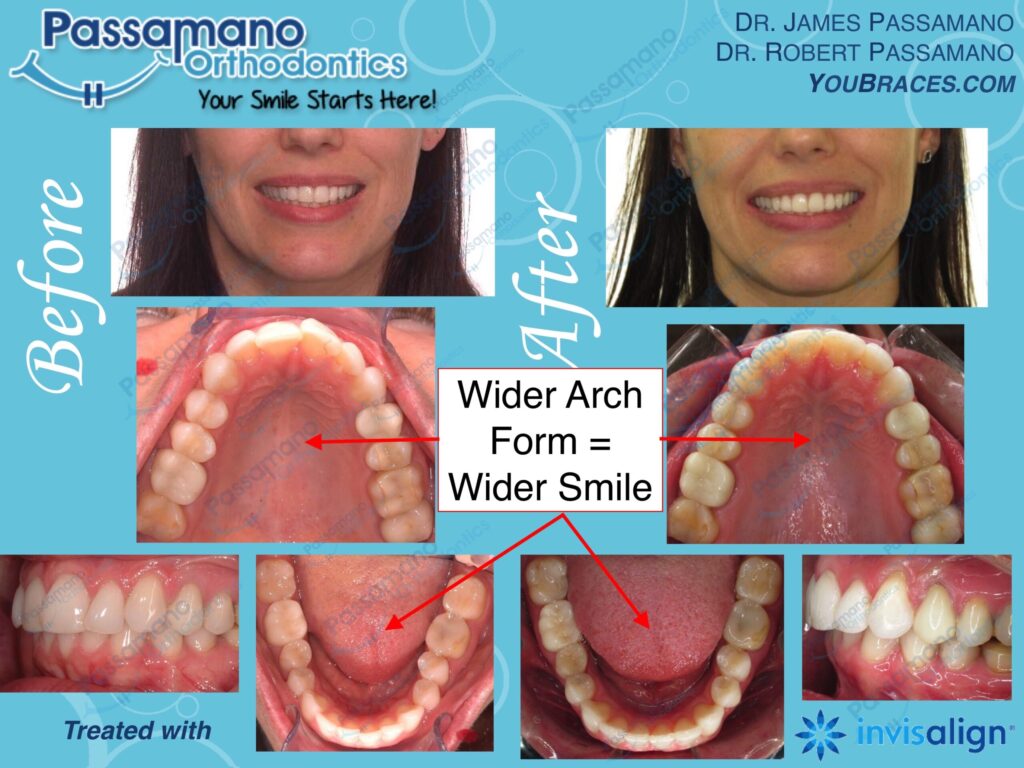
- Improved aesthetics: Dental arch expansion can enhance the overall appearance of the smile by creating a more balanced and harmonious alignment of the teeth.
- Better oral health: By expanding the dental arch, it becomes easier to clean the teeth and gums, reducing the risk of cavities, gum disease, and other oral health issues.
- Enhanced bite function: Dental arch expansion can improve the bite function, allowing for proper chewing and reducing the strain on the jaw joints.
- Preventive measure: Expanding the dental arch at an early age can help prevent the need for more invasive orthodontic treatments, such as tooth extraction or jaw surgery, in the future.
Overall, dental arch expansion is essential for achieving optimal results with Invisalign. It not only addresses existing dental issues but also provides long-term benefits for oral health and overall well-being. By widening the dental arch, Invisalign can effectively align the teeth and create a beautiful, functional smile.
Achieving Optimal Results with Invisalign

Choosing the Right Provider
During the initial consultation, the provider will evaluate your dental arch and determine if Invisalign is the right treatment option for you. They will take digital impressions of your teeth and create a 3D model to visualize the planned movements of your dental arch. This will help them design a precise treatment plan that addresses your unique needs.
Customized Treatment Plan
Once the treatment plan is finalized, your provider will create a series of custom-made aligners specifically designed to gradually move your teeth and expand your dental arch. Each set of aligners will be worn for about two weeks before moving on to the next set. The aligners should be worn for at least 22 hours a day to ensure optimal results.
Regular check-ups with your provider will be scheduled to monitor your progress and make any necessary adjustments to your treatment plan. These check-ups are essential for ensuring that your dental arch expansion is progressing as planned and that the aligners are fitting properly.
Compliance and Care
Monitoring Progress and Adjustments
Throughout the treatment process, your provider will closely monitor your progress and make any necessary adjustments to ensure that your dental arch is expanding correctly. They will use their expertise and experience to make any modifications to the treatment plan as needed, ensuring that you achieve the desired results.
By following the recommended treatment plan, maintaining good oral hygiene, and regularly visiting your provider, you can achieve optimal results with Invisalign for dental arch expansion. Remember to choose a qualified provider who can guide you through the process and help you achieve the smile you desire.
The Success Rate of Invisalign for Dental Arch Expansion
Invisalign is a popular orthodontic treatment that has been proven to be highly successful in achieving dental arch expansion. The success rate of Invisalign for dental arch expansion is impressive, with many patients experiencing positive results.
One of the main reasons why Invisalign has a high success rate for dental arch expansion is its ability to gradually move the teeth into their desired positions. The aligners used in Invisalign treatment are custom-made to fit snugly over the teeth and apply gentle pressure to guide them into the correct alignment.
Unlike traditional orthodontic methods, such as braces, Invisalign aligners are removable. This allows patients to easily clean their teeth and maintain good oral hygiene throughout the treatment process. The ability to remove the aligners also means that there are fewer restrictions on what patients can eat, making it a more comfortable and convenient option for dental arch expansion.
The success of Invisalign for dental arch expansion also lies in its advanced technology. The treatment involves the use of 3D imaging and computer simulations to create a customized treatment plan for each patient. This precision and accuracy greatly contribute to the success rate of Invisalign.
In addition, Invisalign treatment is closely monitored by a qualified orthodontist or dentist. Regular check-ups are scheduled to ensure that the treatment is progressing as planned and to make any necessary adjustments. This level of supervision and guidance further enhances the success rate of Invisalign for dental arch expansion.
Comparing Invisalign to Traditional Orthodontic Methods
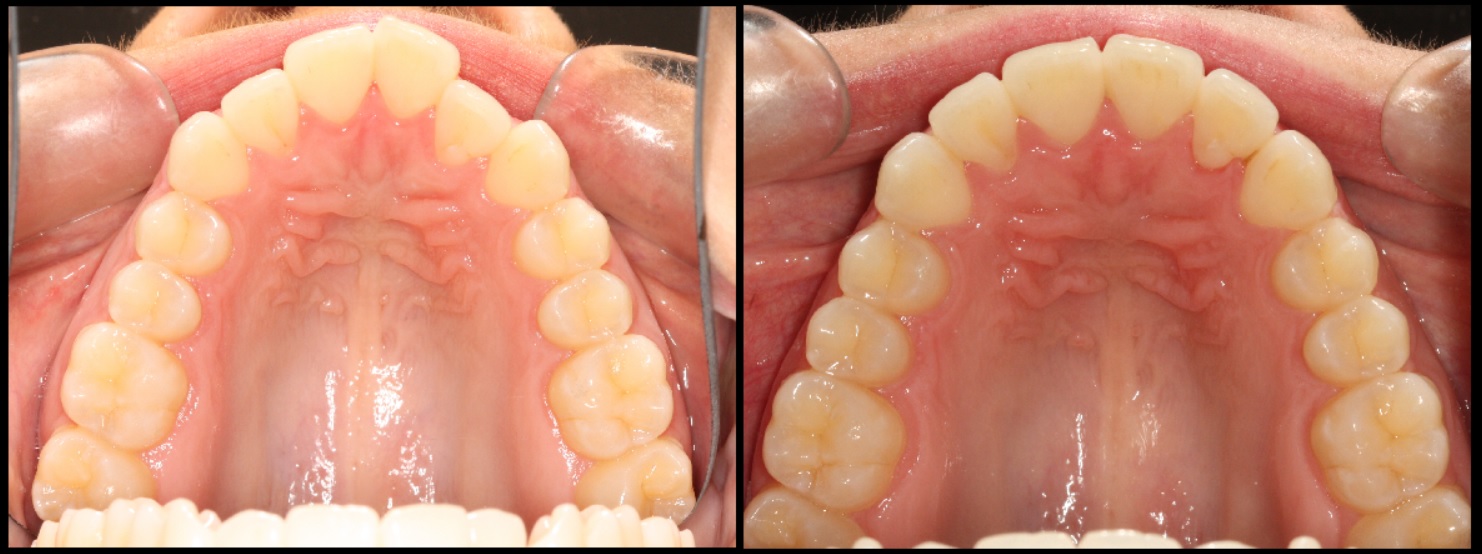
One of the main differences is the visibility of the treatment. Traditional braces consist of metal brackets and wires that are attached to the teeth, making them highly noticeable. Invisalign, on the other hand, uses clear aligners that are virtually invisible when worn. This makes Invisalign a more aesthetically pleasing option for those who are concerned about the appearance of their smile during treatment.
Another difference is the comfort level. Traditional braces can cause discomfort and irritation due to the brackets and wires rubbing against the inside of the mouth. Invisalign aligners are made of smooth plastic, making them more comfortable to wear. They also do not require any adjustments or tightening, unlike traditional braces.
Maintaining oral hygiene is also easier with Invisalign. With traditional braces, it can be challenging to clean around the brackets and wires, leading to a higher risk of plaque buildup and tooth decay. Invisalign aligners are removable, allowing for proper brushing and flossing. This helps to maintain better oral health throughout the treatment process.
One advantage of traditional braces is their ability to treat more complex dental issues. They can be used to correct severe misalignments, overcrowding, and bite problems. Invisalign is better suited for mild to moderate cases of misalignment and spacing issues. Your orthodontist will be able to determine which treatment option is best for your specific needs.
Potential Side Effects of Invisalign for Dental Arch Expansion
1. Discomfort: Some patients may experience mild discomfort or soreness when wearing Invisalign aligners, especially during the initial stages of treatment or when switching to a new set of aligners. This discomfort is usually temporary and can be managed with over-the-counter pain relievers.
4. Tooth sensitivity: Some patients may experience increased tooth sensitivity during Invisalign treatment. This sensitivity is usually temporary and resolves once the treatment is complete.
5. Gum irritation: Invisalign aligners may cause temporary gum irritation or soreness. This can be managed by practicing good oral hygiene and using a soft-bristled toothbrush to clean the aligners and gums.
6. Changes in bite: In some cases, Invisalign treatment for dental arch expansion may cause temporary changes in the bite. This is usually a normal part of the treatment process and should resolve once the treatment is complete.
Finding a Qualified Invisalign Provider for Dental Arch Expansion
Here are some factors to consider when searching for a qualified Invisalign provider:
Educational Background and Training
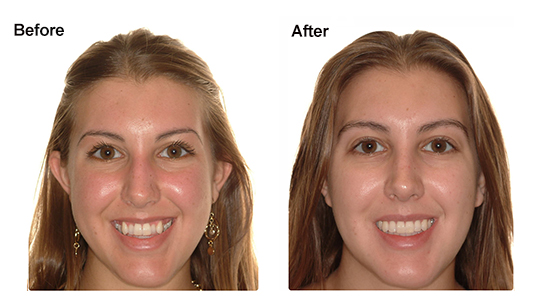
Experience and Expertise
It is essential to choose a provider who has extensive experience in performing dental arch expansion with Invisalign. Ask about their success rate and how many cases they have handled. An experienced provider will be able to assess your specific needs and develop a customized treatment plan.
Technology and Equipment
Make sure the provider uses the latest technology and equipment for Invisalign treatment. This includes digital scanners, 3D imaging, and computer-aided design software. Advanced technology can enhance the accuracy and effectiveness of dental arch expansion with Invisalign.
Reviews and Testimonials
Read reviews and testimonials from previous patients to get an idea of the provider’s reputation and patient satisfaction. Look for positive feedback specifically related to dental arch expansion with Invisalign.
Consultation
Schedule a consultation with the provider to discuss your goals and expectations for dental arch expansion. During the consultation, ask questions about the treatment process, potential side effects, and expected timeline. A qualified provider will be able to address your concerns and provide you with all the necessary information.
Cost and Financing Options
| Factors to Consider | Questions to Ask |
|---|---|
| Educational Background and Training | What is your educational background and training in orthodontics and Invisalign? |
| Experience and Expertise | How many dental arch expansion cases have you handled with Invisalign? |
| Technology and Equipment | What technology and equipment do you use for Invisalign treatment? |
| Reviews and Testimonials | Can you provide reviews or testimonials from previous patients who underwent dental arch expansion with Invisalign? |
| Consultation | What can I expect during the consultation process? |
| Cost and Financing Options | What is the cost of dental arch expansion with Invisalign, and do you offer any financing options? |
By considering these factors and asking the right questions, you can find a qualified Invisalign provider who can help you achieve optimal results with dental arch expansion.

Dr. Fidel Cann: Esteemed orthodontist with a lifelong dedication to enhancing smiles and oral health. Pioneering expertise, compassionate care.





